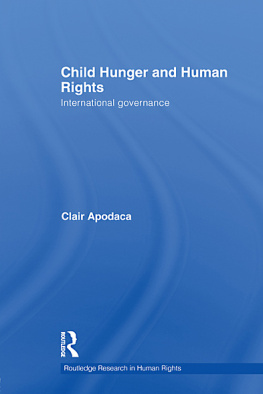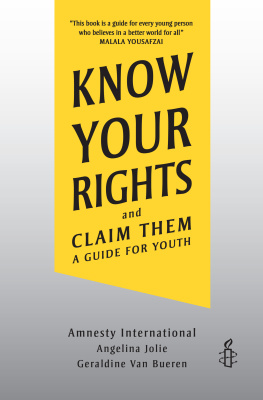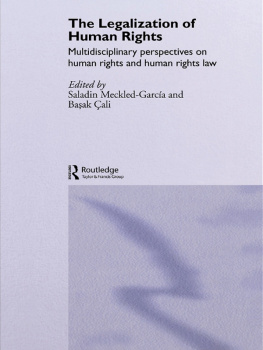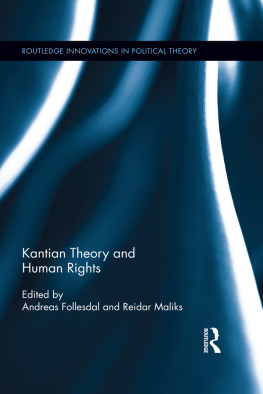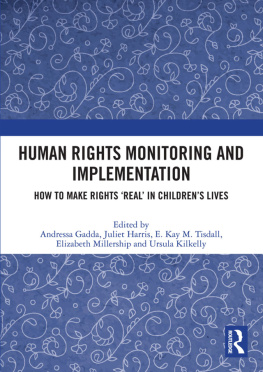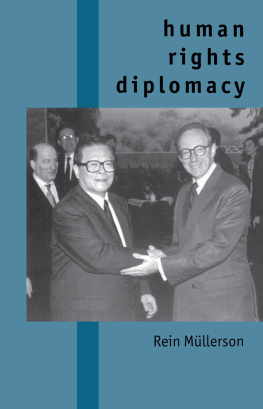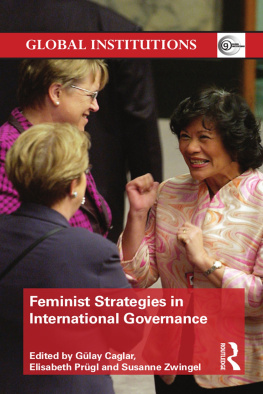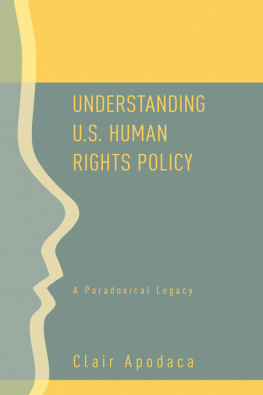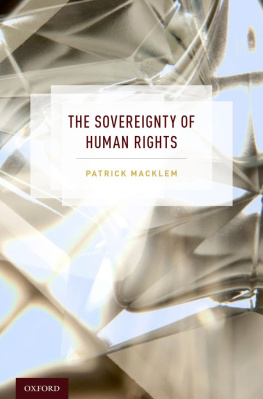Child Hunger and Human Rights
Child Hunger and Human Rights: International Governance applies the human rights theory of legal obligation to the problem of child malnutrition and investigates whether duty-bearers have fulfilled their obligations to protect, respect and provide.
This book includes moral, economic, political, and legal components to the research on the childs right to be free from hunger. Two methods of investigation are used: the first a historical comparative method based on the systematic analysis of the content of historical materials, government documents, policy statements, state budgets, newspaper reports, and other public records, and the second is statistical analysis. Apodaca investigates beyond the suffering, deformities, and deaths of children, to child malnutrition resulting in reduced physical and mental development threatening the childs life opportunities, the prospects of further generations, and the growth of the economy.
Examining the connection between governmental agricultural, economic and financial policies, international donor policies, and transnational corporate voluntary codes of conduct affecting child malnutrition rates, this book will be of interest to policy makers, activists, students, and scholars of human rights, social justice, international ethics, development, international relations, and law.
Clair Apodaca is an Associate Professor in the Department of Politics and International Relations at Florida International University.
Routledge research in human rights
1 Human Rights and US Foreign Policy
Jan Hancock
2 Human Rights and Foreign Aid
For love or money?
Bethany Barratt
3 Child Hunger and Human Rights
International governance
Clair Apodaca
Child Hunger and Human Rights
International governance
Clair Apodaca

LONDON AND NEW YORK
First published 2010
by Routledge
2 Park Square, Milton Park, Abingdon, Oxon OX14 4RN
Simultaneously published in the USA and Canada
by Routledge
270 Madison Avenue, New York, NY 10016
Routledge is an imprint of the Taylor & Francis Group, an informa business.
This edition published in the Taylor & Francis e-Library, 2009.
To purchase your own copy of this or any of Taylor & Francis or Routledges collection of thousands of eBooks please go to www.eBookstore.tandf.co.uk.
2010 Clair Apodaca
All rights reserved. No part of this book may be reprinted or reproduced or
utilized in any form or by any electronic, mechanical, or other means, now
known or hereafter invented, including photocopying and recording, or in
any information storage or retrieval system, without permission in writing
from the publishers.
British Library Cataloguing in Publication Data
A catalogue record for this book is available from the British Library
Library of Congress Cataloging in Publication Data
A catalog record for this book has been requested
ISBN 0-203-85504-3 Master e-book ISBN
ISBN10:0-415-55269-9 (hbk)
ISBN10:0-203-85504-3 (ebk)
ISBN13:978-0-415-55269-1 (hbk)
ISBN13:978-0-203-85504-1 (ebk)
The book is dedicated to my children Andrea, Jamey, and Jeremy
Contents
Illustrations
Figures
2.1 | Average stunting rate by geographical region |
2.2 | Average stunting rate by income |
Tables
1.1 | Non-treaty documents, reports, expert opinions, global conferences, and resolutions acknowledging the right to food |
2.1 | Countries included in study 9 |
2.2 | Variable summary table 9 |
3.1 | Government budgets and child malnutrition GLS regression with random effects |
3.2 | Agricultural infrastructure and child malnutrition GLS regression with random effects |
4.1 | Donor state activities effects on child malnutrition GLS regression with random effects |
5.1 | IGO activities and child malnutrition GLS regression with random effects |
6.1 | MNC activities and child malnutrition GLS regression with random effects |
Acknowledgments
There are several people to whom I own a debt of thanks for their support, suggestions, and advice when I took up this project. First, and foremost, I would like to thank my husband and colleague Franois Debrix for his constant encouragement and, when needed, prodding in the writing of Child Hunger and Human Rights: International Governance. I would also like to recognize Jeremy White for his love and inspiration. His birth expanded my awareness and appreciation of human rights to include the rights and dignity of the child. I would also like to extend my gratitude to M.Rodwan Abouharb, Mark Gibney, and Will Moore for taking the time to answer all my questions; and Mauro Caraccioli for carefully reading and providing comments on the final draft of this manuscript. Finally, I would also like to acknowledge Heidi Bagtazo, my editor, for allowing me to write this book.
Acronyms and abbreviations
CESCR | Committee on Economic, Social and Cultural Rights |
CRC | Convention on the Rights of the Child |
DAC | Development Assistance Committee |
FAO | Food and Agricultural Organization |
FDI | Foreign direct investment |
HIPC | Highly Indebted Poor Country |
ICESCR | International Covenant on Economic, Social, and Cultural Rights |
ICHRP | International Council on Human Rights Policy |
ICJ | International Court of Justice |
IFI | International Financial Institution |
IFPRI | International Food Policy Research Institute |
IGO | Intergovernmental organization |
ILO | International Labour Organization |
IMF | International Monetary Fund |
MNC | Multinational corporations |
OECD | Organization for Economic Co-operation and Development |
OHCHR | Office of the High Commissioner for Human Rights |
SAP | Structural adjustment policy |
TNC | Transnational corporations |
UDHR | Universal Declaration of Human Rights |
UNCTAD | United Nations Conference on Trade and Development |
UNDP | United Nations Development Programme |
UNHCHR | United Nations High Commission for Human Rights |
UNICEF | United Nations Childrens Fund |

